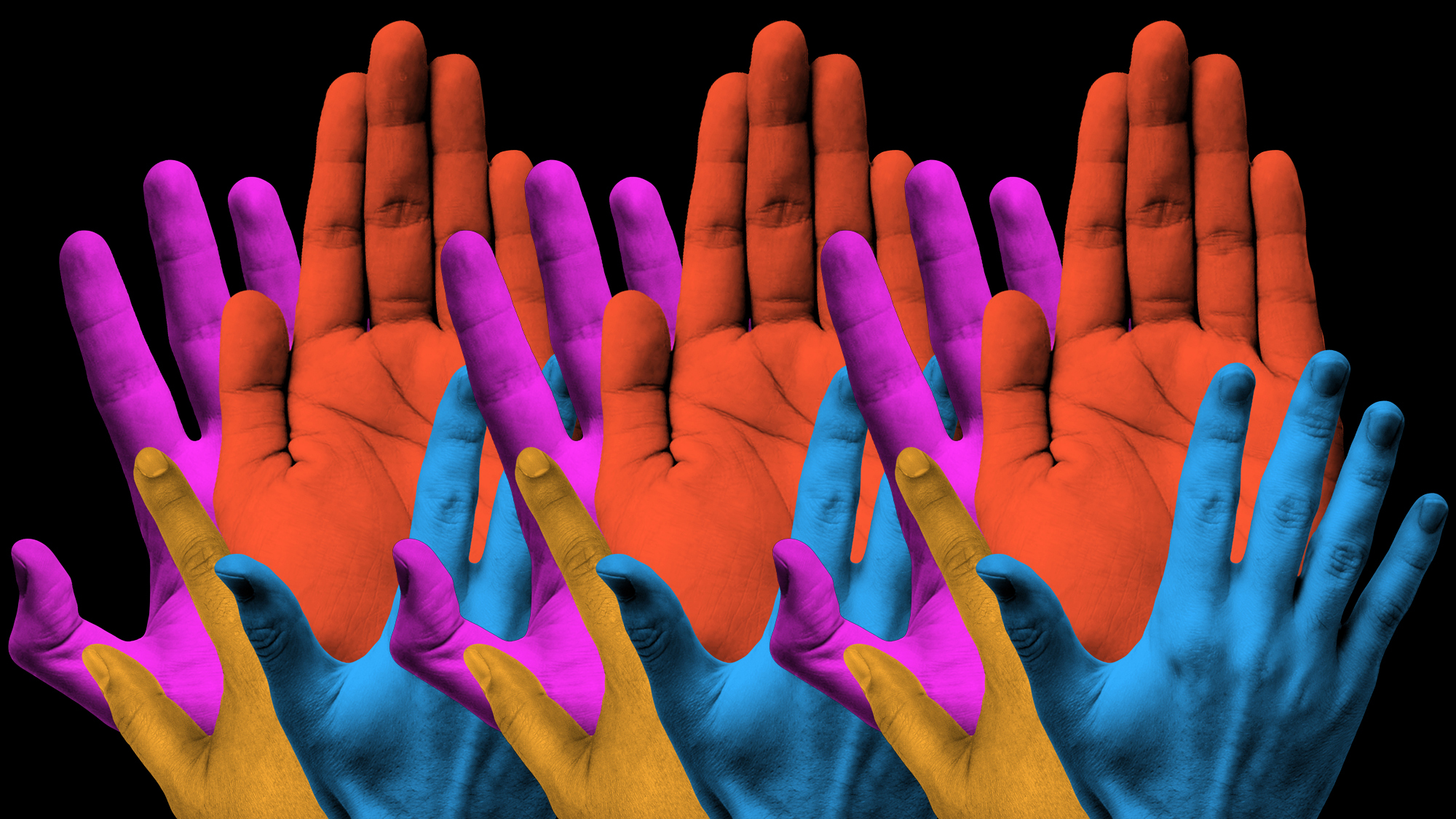In Head Trip, PopSci explores the relationship between our brains, our senses, and the strange things that happen in between.
WE’VE ALL WONDERED how it might feel to inhabit a body that is not our own. The idea of body transfer has been a science fiction staple from the 1882 novel Vice Versa to the ongoing blockbuster Avatar movies. But while we won’t be swapping bodies with anyone else soon, it turns out that it is possible to feel as if something that’s not actually part of your body is connected to it. This phenomenon is called the body transfer illusion.
The canonical example of the body transfer illusion is the rubber hand experiment. In it, a subject’s hand is obscured from view, perhaps with a mirror box, and a rubber hand is placed where the individual might expect to see their own. If both the real hand and the rubber hand receive identical manipulation—for example, by being stroked gently—then after a while, the participant begins to perceive the fake part as their own. When someone swings a hammer in the direction of the rubber hand, say, the subject might flinch.
The rubber hand experiment was first described in 1998 and has been explored widely in the decades since. Perhaps the best-known application of the phenomenon is as therapy for people with amputated limbs who are experiencing phantom limb pain.
The key to this illusion seems to be the interaction between so-called bottom-up and top-down constructions of body ownership: The former is based on pure sensory input, while the latter is based on the brain’s experience and resultant expectations. “The brain has a lot of knowledge about your body,” says H. Henrik Ehrsson, a cognitive neuroscientist at Karolinska Institute in Sweden whose work focuses on the construction of a sense of body ownership. “It remembers where your body was just a few seconds ago. It has an internal representation of your body, and it’s always going to compare that to the incoming sensory data.”
The rubber hand experiment is an example of how incoming data can be manipulated in a way that alters the brain’s internal representation of the body. However, there are limits to the sorts of illusions that can be induced. “The shape of the object is important,” Ehrsson explains. “[The illusion] works well with objects that are similar to human limbs, but if you have, say, a block of wood, or something like that, it doesn’t work.” It’s also important for the stimulation of the rubber and real hands to be synchronized—if “visual and tactile stimuli are out of sync by even a couple of hundred milliseconds, the illusion will not be elicited,” he adds.
Mel Slater, a professor at the University of Barcelona in Spain, has spent decades exploring the idea of body transfer in the context of virtual reality. He describes one of his experiments, from 2012, in which he attempted to quantify exactly how far the illusion could be pushed. Fifty participants entered a VR environment where one of their simulated arms began growing in length. Participants reported that the feeling of identification with the arm declined as its length grew. They maintained a strong sense of ownership—initially. “The illusion was maintained for that arm up to three times the length of the real arm—but no more,” Slater says. “Not four times.” The experiment shows that while there appear to be limits on how radically different a body we can identify with, some wild outcomes remain possible.
Beyond distorting the physical dimensions of the body, the body transfer illusion can also create all sorts of fascinating potential scenarios, such as embodying someone of a different race, gender, or age. Slater’s experiments have explored all these possibilities and found that such experiences seem to have profound psychological effects on participants. For example, a white person’s experience of inhabiting the body of a person of color resulted in a measurable and lasting reduction in implicit racial bias.
There are also stranger possibilities, like experiencing supernumerary limbs or two full bodies. One might think that the sense of having a pair of right arms would be disconcerting. However, Ehrsson—who tests all his experiments himself—is at pains to point out the difference between illusions and delusions. With the former, the person feeling the sensation retains an understanding that the faux circumstances aren’t “real”; thus, the experience lacks the emotionally distressing nature of a genuine delusion.
So what’s having two right arms like? Ehrsson laughs. It’s “weird,” he says, “[but] quite funny.”
Read more PopSci+ stories.

